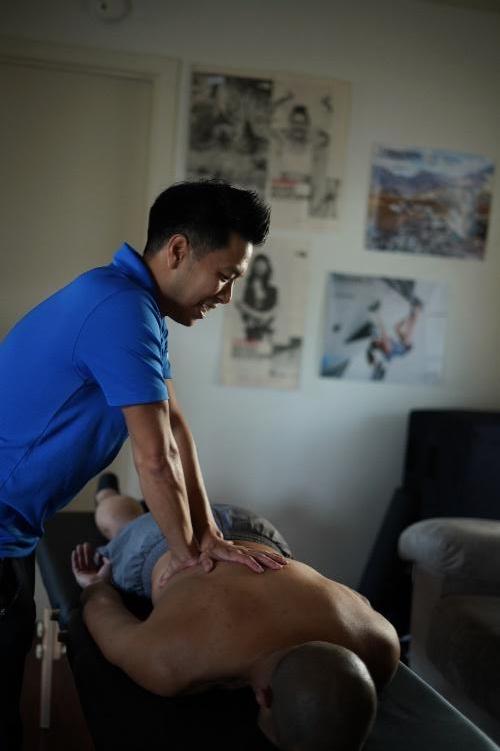Myofascial Release & Self-Sustainability

If you’ve ever heard of Myofascial Release, you might think it’s foam rolling, using a lacrosse ball, or some other painful modality that aggressively digs into your muscles and soft tissues. While these things are a part of myofascial release, they are only a small fraction of what myofascial release really is.
It’s so Fascia-nating
Myofascial Release is about releasing restrictions in your fascia. Fascia is a connective tissue that covers you from head-to-toe, through your muscles, to your organs, all the way down to the cellular level.
When we have fascial restrictions in our bodies – whether it be from poor posture, repetitive motions, or trauma (both physical and emotional) – it prevents our bodies from moving fluidly.
It has been estimated that myofascial restrictions can create a tensile strength of up to approximately 2,000 pounds per square inch!1
Moreover, restrictions of the fascia can create pain or malfunction throughout the body, sometimes with bizarre side effects and seemingly unrelated symptoms. It is thought that an extremely high percentage of people suffering with pain, loss of motion, or both, may have problems due primarily to fascial restrictions.2
Just like we upkeep our dental hygiene by brushing our teeth twice per day, if we develop soft-tissue hygiene with daily self-treatment we’ll be able to sustain ourselves by taking care of the restrictions in our fascia allowing us to increase mobility, improve circulation, and decrease pain.
Exercise to Try:
Using a 4-6 inch ball that is squishy, position the ball on your stomach below your ribs and lay on top of the ball. You might feel a tightness or “good pain.” Lay on top of the ball while it presses into the “tight spot” for 5-8 minutes until it releases. Find another area of tension and repeat the process.


Follow the Laws of Nature
As Albert Einstein once said, “Look deep into nature & you will understand everything better.”
If you look into nature, you’ll see that there are no straight lines. Plants grow with twists and turns, animals act on their instincts without logic, and even our solar system spins in its orbit. Humans, however, have a need for things to make sense. This linear logic, while necessary to build skyscrapers and bridges, often leads us down a path of staleness if we use it as a basis to make all of our life decisions from.
Rabindranath Tagore states it best, “a mind all logic is like a knife all blade. It makes the hand bleed that uses it.”
When we recognize that we’re part of nature, and follow the laws of nature, you’ll realize that just because something makes sense doesn’t mean it holds any merit in physical reality. Furthermore, you’ll see that nature is never in a rush, yet everything seems to develop so beautifully. But human-nature, by contrast, it seems like we’re always in a rush to get something done. We’ve changed from human-beings to human-doings, constantly doing and doing often at the expense of our own health.
We borrow from the bank of our health, taking loans on stress and restless nights to pay for things that don’t really matter. We get caught up with life until we fall ill. Then, we realize that there was only ever one thing that was truly important – our health.
They say a person with good health has a million wishes. But a person who is sick only has one wish – to be healthy again.
When to Ask for Help
If you’ve been doing self-treatment and find yourself plateaued in your healing journey, then it’s time to reach out to a myofascial release therapist. With the application of hands-on myofascial release from a skilled practitioner, the restrictions in your fascial system can dissipate allowing you to increase your body’s natural recovery process, help with overall relaxation, and relieve stress.

References
- Katake, K. The strength for tension and bursting of human fasciae, J. Kyoto Pref. Med. Univ., 1969: 484-488
- Travell JG, Simmons, DG. Myofascial pain and dysfunction – the trigger point manual. Baltimore: Williams & Wilkins, 1983: 260.
About the Author
Unu is a Doctor of Physical Therapy, Expert Level Myofascial Release Therapist, and founder of Perspective Physical Therapy and Complete Climber. He has a special interest in helping climbers, but he also helps anyone needing assistance in their healing journey. If this article resonates with you, you can find more information about myofascial release on his website at www.myofascial.health.






